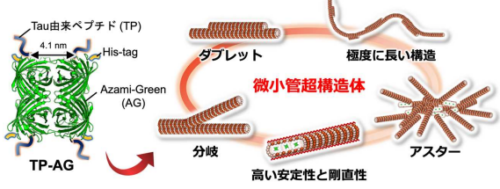2022-09-07 ノースカロライナ州立大学(NCState)
・ノースカロライナ州立大学の GenX曝露試験の結果を詳述した新しい論文で、研究者は、過フッ化アルキル物質(PFAS)レベルの上昇は、参加者の血液中の総コレステロールおよび非 HDL コレステロールの上昇と関連していることを発見した。また、PFASの代表的な化学物質であるPFOSとPFNAは、他の化学物質と比較して最も強くコレステロールの上昇と関連しており、その影響は高齢者でより顕著であることがわかった。
・血液サンプルは、2017年11月と2018年5月の2回のサンプリング作業で、344人のウィルミントン住民(大人289人、子供55人)から採取されたものである。
・サンプルは、レガシーPFAS、フルオロエーテル、および脂質測定値(総コレステロール、LDLコレステロール、HDLコレステロール、およびトリグリセリドを含む)のレベルを測定するために分析された。血液サンプルからは、ほぼすべての参加者の血液中に、レガシーPFASと3種類の新しいフルオロエーテルPFASが高濃度で検出された。しかし、調査の発端となった化学物質、GenXは検出されなかった。その後の調査で、この化学物質は血液中にごく短時間しか存在しないことが判明した。
非HDLコレステロール値、化学物質レベルとコレステロールの関係を評価する際に、参加者のBMI、年齢、性別、人種/民族、喫煙状況などの変数も考慮に入れた。
・その結果、PFASのレガシー化学物質であるPFOSおよびPFOAとコレステロールの関係は、年齢とともに増加し、63歳以上の参加者で最も強くなることがわかった。18歳未満の参加者では、化学物質への曝露とコレステロールの間に関連は見られなかった。
<関連情報>
- https://news.ncsu.edu/2022/09/elevated-cholesterol-found-in-genx-exposure-study-participants/
- https://ehp.niehs.nih.gov/doi/full/10.1289/EHP11033
GenX曝露試験における飲料水中のPFASおよびフルオロエーテルと脂質のアウトカムについて Drinking Water–Associated PFAS and Fluoroethers and Lipid Outcomes in the GenX Exposure Study
Emma M. Rosen,Nadine Kotlarz,Detlef R.U. Knappe,C. Suzanne Lea,David N. Collier,David B. Richardson and Jane A. Hoppin
Environmental Health Perspectives Published:7 September 2022
DOI:https://doi.org/10.1289/EHP11033

Abstract
Background:
Residents of Wilmington, North, Carolina, were exposed to drinking water contaminated by fluoroethers and legacy per- and polyfluoroalkyl substances (PFAS), such as perfluorooctanoic acid (PFOA) and perfluorooctane sulfonate (PFOS), with fluoroether exposure occurring from 1980 to 2017. PFOA and PFOS have previously been associated with metabolic dysfunction; however, few prior studies have examined associations between other PFAS and lipid levels.
Objectives:
We measured the association between serum fluoroether and legacy PFAS levels and various cholesterol outcomes.
Methods:
Participants in the GenX Exposure Study contributed nonfasting blood samples in November 2017 and May 2018 that were analyzed for 20 PFAS (10 legacy, 10 fluoroethers) and serum lipids [total cholesterol, low-density lipoprotein (LDL), high-density lipoprotein (HDL), triglycerides] and calculated non-HDL cholesterol. We estimated covariate-adjusted associations between quartiles of exposure to each of the PFAS measures (as well as the summed concentrations of legacy PFAS, fluoroethers, and all 10 targeted PFAS) and lipid outcomes by fitting inverse probability of treatment weighted linear regressions.
Results:
In this cross-sectional study of 326 participants (age range 6–86 y), eight PFAS were detected in >50%<?XML:NAMESPACE PREFIX = “[default] http://www.w3.org/1998/Math/MathML” NS = “http://www.w3.org/1998/Math/MathML” />>50% of the population. For PFOS and perfluorononanoic acid (PFNA), non-HDL cholesterol was approximately 5mg/dL5mg/dL higher per exposure quartile increase: [PFOS: 4.89; 95% confidence interval (CI): 0.10, 9.68 and PFNA: 5.25 (95% CI: 0.39, 10.1)], whereas total cholesterol was approximately 6mg/dL6mg/dL higher per quartile [PFOS: 5.71 (95% CI: 0.38, 11.0), PFNA: 5.92 (95% CI: 0.19, 11.7)]. In age-stratified analyses, associations were strongest among the oldest participants. Two fluoroethers were associated with higher HDL, whereas other fluoroether compounds were not associated with serum lipid levels.
Discussion:
PFNA and PFOS were associated with higher levels of total and non-HDL cholesterol, with associations larger in magnitude among older adults. In the presence of these legacy PFAS, fluoroethers appeared to be associated with HDL but not non-HDL lipid measures. https://doi.org/10.1289/EHP11033


